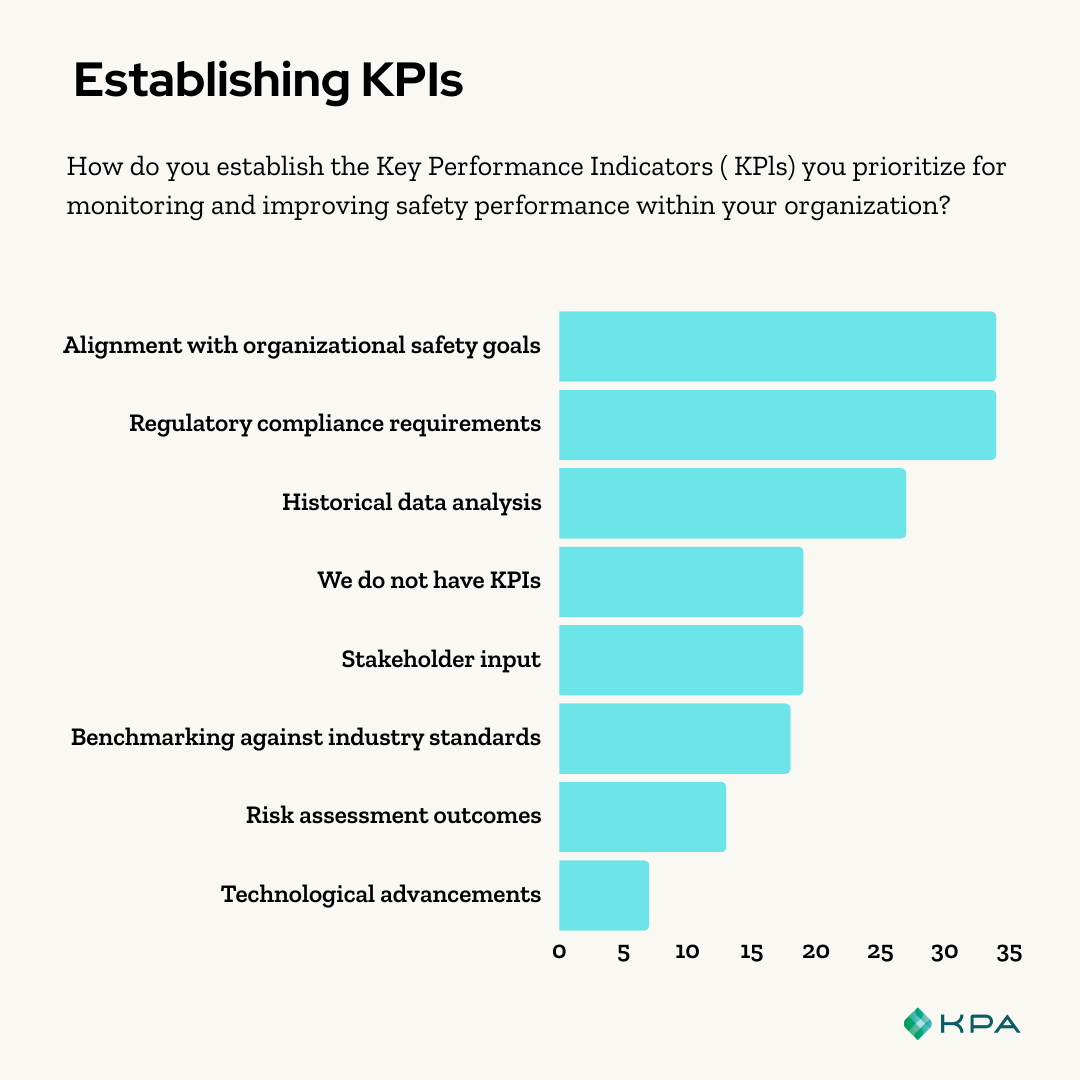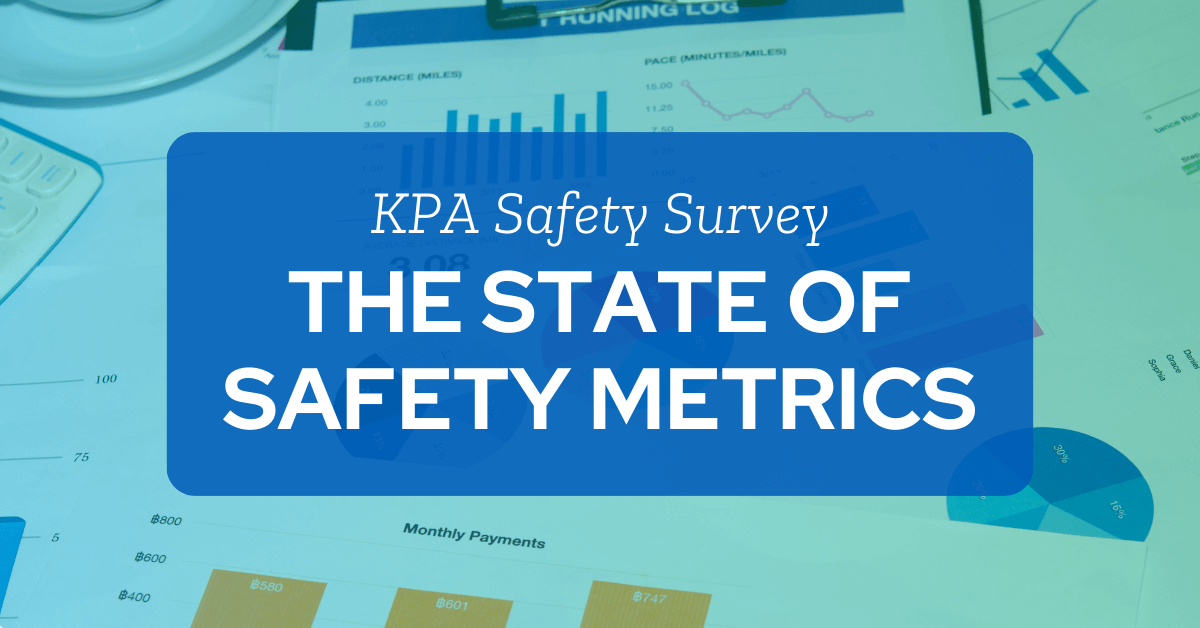Effective safety management is crucial in today’s workplace, yet many organizations struggle with meaningful safety metrics. A recent KPA survey reveals a significant gap in safety measurement practices: while some companies align their KPIs with organizational goals, others rely solely on compliance-based metrics or don’t track KPIs at all. This disconnect not only risks worker safety but also impacts business performance. Let’s explore how safety managers can leverage data to create safer, more productive workplaces.
The Current State of Safety Metrics
Our survey found that while many organizations are tracking safety metrics, there’s a significant opportunity to enhance the effectiveness of these efforts.
About the Survey
In partnership with EHS Daily Advisor, our recent survey gathered valuable data from 110 industry leaders, safety officers, and employees, shedding light on the most effective KPIs and their impact on workplace safety.
- 34% of respondents establish KPIs based on regulatory compliance requirements
- 34% align KPIs with organizational safety goals
- Only 27% use historical data analysis to identify trends and areas for improvement
- And, alarmingly, 19% of respondents don’t track KPIs at all
These findings suggest that while compliance and goal alignment are priorities, many organizations may be missing out on the power of data-driven decision-making and proactive risk management.

KPA’s recent survey of safety professionals reveals interesting insights into how organizations approach safety metrics and where there’s room for growth.
The Takeaway
For safety managers, these results highlight several areas for immediate improvement:
- If your organization doesn’t have safety KPIs, establishing them should be your top priority. Start with basic metrics aligned with regulatory requirements and gradually expand.
- For those already using KPIs, look beyond compliance. While meeting regulatory requirements is crucial, it shouldn’t be your only focus. Align your KPIs with broader organizational safety goals to create a more comprehensive safety program.
- Use your data more effectively. Historical data analysis can reveal trends and patterns that point to areas needing attention. Implement a system that allows for easy data collection and analysis.
- Incorporate risk assessment into your KPI development process. This proactive approach helps identify potential hazards before they lead to incidents, allowing you to focus your efforts where they’re most needed.
- Consider implementing an integrated EHS software solution. This can help automate data collection, simplify analysis, and provide real-time insights, making it easier to establish, track, and act on meaningful safety KPIs.
Remember, the goal isn’t just to have KPIs but to have the right KPIs that drive continuous improvement in your safety program. Regularly review and adjust your metrics to ensure they provide valuable insights and contribute to a safer workplace.
Here’s What KPA Customers Say
Over in the KPA Connect customer community, we asked our customers for their take on establishing effective safety metrics. Here’s what they had to say.
“You don’t have to use the same cookie cutter KPI’s that others use. Some will not serve your company.”
– HSE Coordinator
When it comes to incident avoidance, we can really get ahead of the curve because now we can see trends. Now we can say, “What do we see during our hazard recognitions? What are we seeing that’s not being resolved?”
– Jim Cosgrave, Safety Manager, DPR Construction
The journey to a safer workplace begins with data-driven decisions and proactive risk management.
Our survey highlights the need for improvement in safety metrics across industries. Whether you’re new to KPIs or refining your existing program, focus on metrics that truly matter – those aligned with your goals, informed by historical data, and incorporating risk assessment. By embracing these practices and modern EHS software, safety managers can build a proactive safety culture that protects workers and enhances business performance. Remember: in safety, what’s measured improves.
Monitoring Safety Program Metrics is easier with solid EHS software in your team’s hands.
KPA simplifies data visualization and reporting, giving users easy access to actionable insights into their EHS program performance. Your data is presented in real-time, so no delay or extra steps are required to access the information. The dashboards are configured based on features tailored to your business’s unique requirements, giving you the power to make informed decisions that impact workplace safety.
Let KPA show you how to take a data-driven approach to safety.
Related Content
Explore more comprehensive articles, specialized guides, and insightful interviews selected, offering fresh insights, data-driven analysis, and expert perspectives.
KPA’s recent survey of safety professionals reveals interesting insights into how organizations approach safety metrics and where there’s room for growth.


